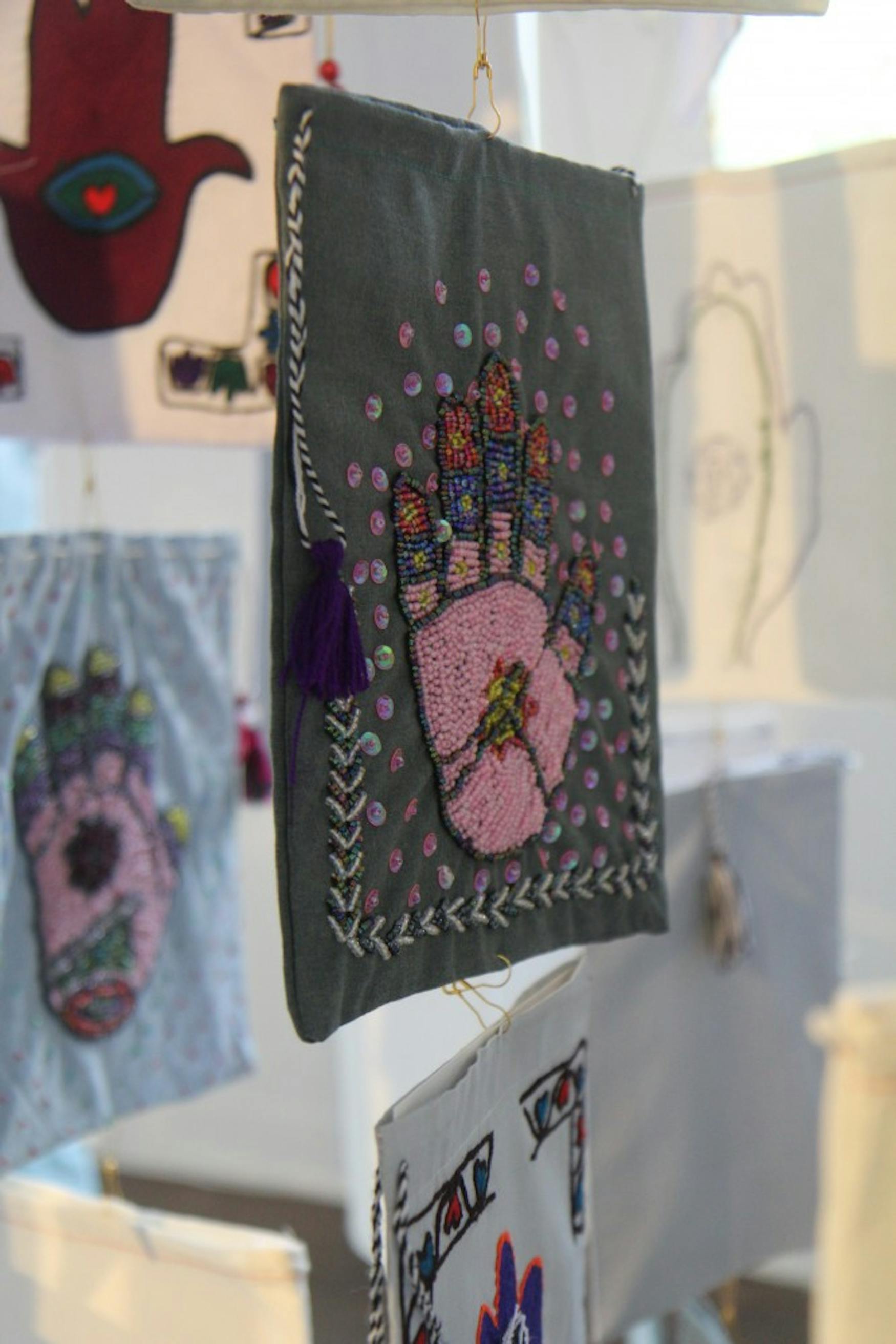WSRC exhibit highlights war’s devastating effects
War has been a part of society since humanity’s earliest days. Tribes warred with one another before countries took their place and continued the fighting.
Linda Bond’s exhibit Reconnaissance, on view at the Women’s Studies Research Center until Oct. 27, questions how today’s society still tolerates this ancient and archaic practice.
The exhibit takes a critical perspective of America’s wars and conflicts in Middle Eastern countries, specifically in Iraq, Afghanistan and Pakistan.
The exhibit uses drawings, maps layered under collages, newspapers, sound and installations to make its point about war’s damaging effects.
Its black-and-white drawings focus on women wearing hijabs and on American soldiers.
The figures were drawn with gunpowder and graphite on paper, embodying the impact of war even in their materials.
Many of the characters in the drawings have ambiguous expressions or body language. In “Untitled (Volunteer)” (2005), a soldier with her hair in a bun looks off of the paper and to the right.
Her eyes are almost closed, but they do not look focused on anything. She looks worried, with prominent lines by her mouth and under her eyes.
She seems to embody the artist’s notion of tired soldiers; alert and ready for action, but not completely awake or fully aware of what they’re doing.
The center wall holds rows of 16-by-12 inch maps that make up “Shadow War” (2012-2015).
The maps represent a selection from Bond’s 400 piece series. They are made of archival ink on paper, covered by cut Mylar on paper.
The Mylar creates a collage effect, making the small black Mylar airplanes and helicopters look out of place.
The collage is reminiscent of childhood projects, and it gives the maps a more whimsical feeling. It makes the viewers feel as if fighter planes and reconnaissance helicopters are part of some elaborate game.
Toward the back of the exhibit is a wall covered in rows of newspapers. “War Language Series” (2015) consists of 11-by-11 inch folded newspapers, printed with archival ink and gunpowder on paper.
A semi-opaque film bearing a word or phrase from the paper’s articles obscured the newspapers.
The most interesting and haunting part of the exhibit is the sound installation, “Remote Control” (2013-14).
Bond collaborated with Richard Brotman to put together the moving piece. The installation consists of three monitors sitting on a black desk.
The outer two monitors click through aerial pictures of war zones, while the middle monitor displays footage of bombs being dropped and targets being hit. The footage comes from a variety of sources, including wikileaks.org, cbsnews.com and Apacheclips.
A pair of large black headphones relays the sound accompanying the clips.
Soldiers can be heard congratulating each other on targets hit, using language that would sound more at home in a video game.
They shout expletives in celebration when they successfully track and target two men, and shout “bam!” in encouragement when bombs are dropped on other fleeing targets.
The installation reinforces the idea that war, especially seen from this light, is treated too lightly.
The installation’s game-like setup, title and sounds emphasize how war has become overly simplified, allowing people to engage in it while forgetting its human costs completely.
The exhibit’s other installations are two small houses. “One to One Installation (detail)” (2015) showcases the bare bones of two 6-foot houses, one with paper walls and one without walls at all.
The house without walls has a unique floor. The floor is made of woven newspapers and is filled with drawings, hung one under the other from the top of the roof. The drawings depict hamsas: colorfully decorated Middle Eastern symbols for peace.
Their placement above the headlines hints that maybe peace should be placed as a higher priority than the war described by the newspaper’s headlines.
The house with walls showcases a similar message, emphasizing the importance of education, an aspect of society victims of war often are forced to forgo.
Letters written in English and Arabic by refugees of war in Arab countries cover two of the wooden house’s walls.
The letters detail the refugees’ struggle to find a way of educating their children, or to access education themselves.
The letters listed the writers’ names, districts, ages, and other details about their lives before and after the wars. Many of the letters were accompanied by drawings of homes and schools.
The house is missing a final wall, which is replaced by a projector that superimposes pictures of Arab women onto a screen on the opposite wall of the house.
Reconnaisance presents a nuanced portrayal of the negative effects of war. The exhibit goes beyond depicting war’s obvious destruction.
Instead, it focuses on how casually soldiers can execute their country’s plans and how mundane the media coverage of serious conflicts has become.
The exhibit is not without a dash of hope: “One to One Installation (detail)” (2015) reminds the viewers that prioritizing education and peace-building efforts might serve as alternatives to armed conflicts and wars.



Please note All comments are eligible for publication in The Justice.